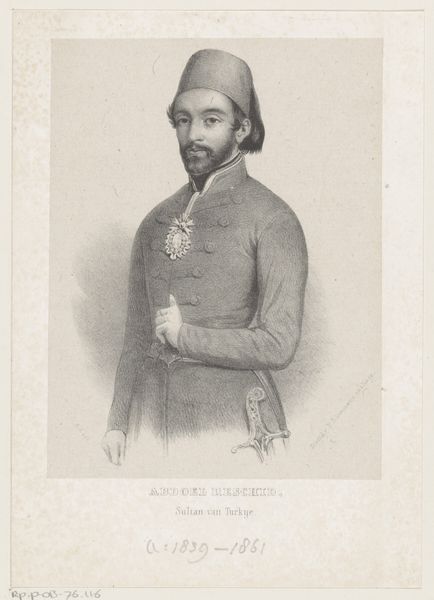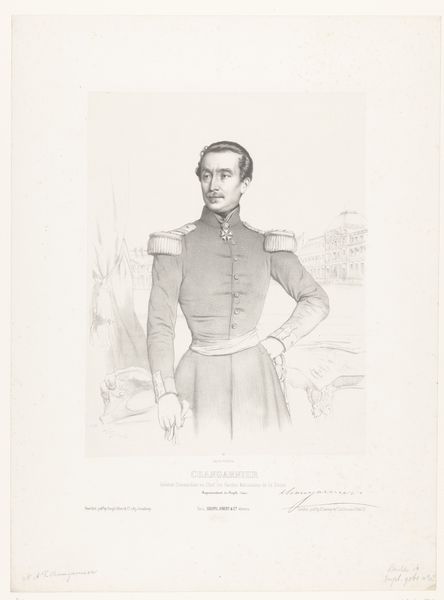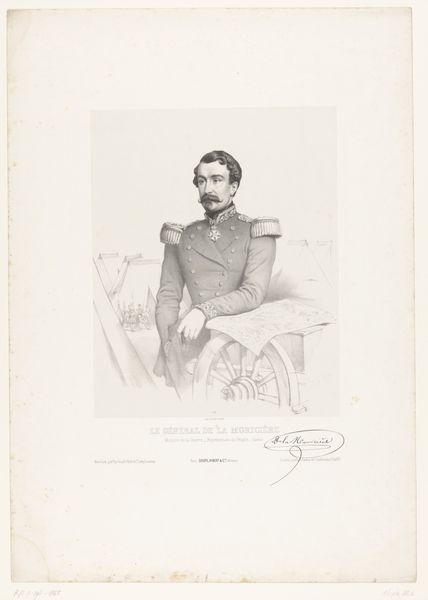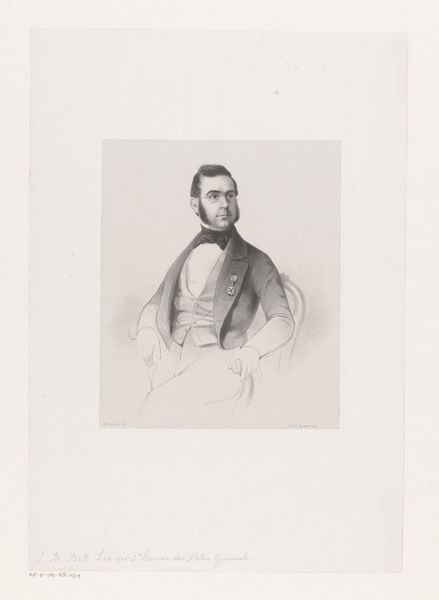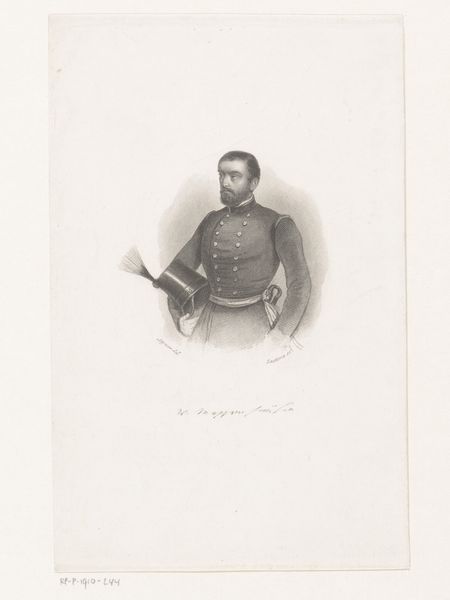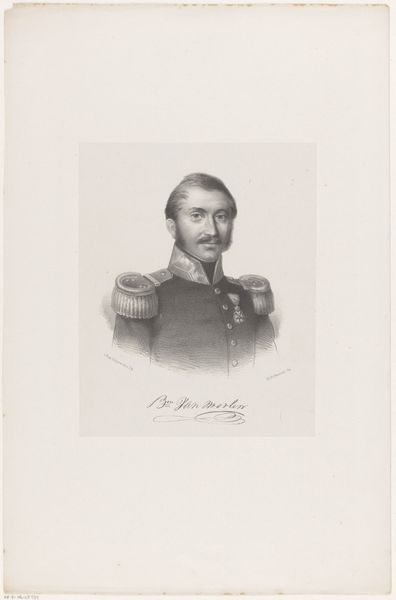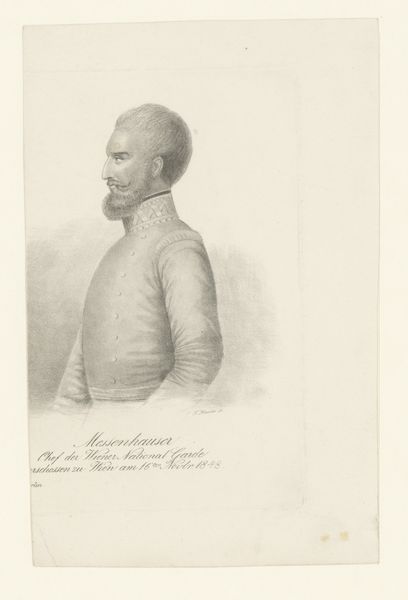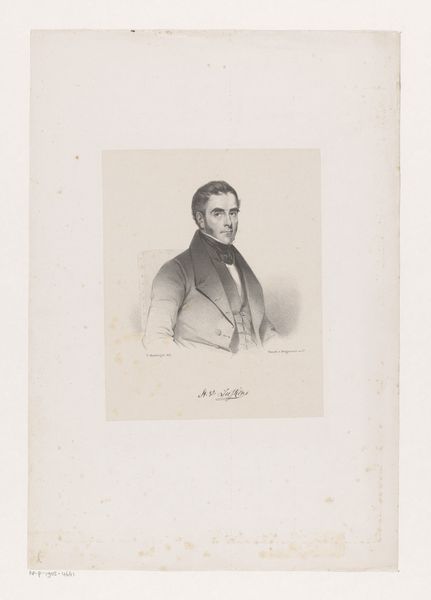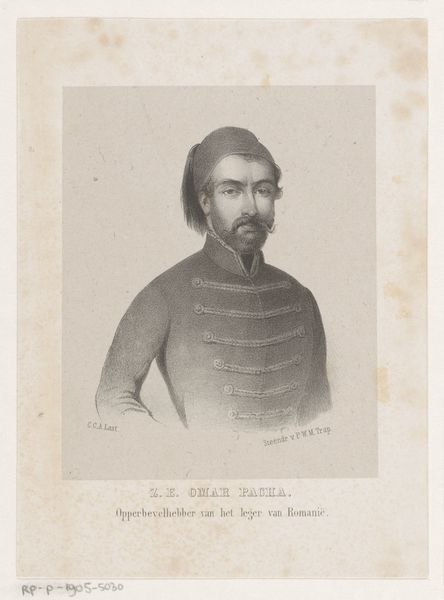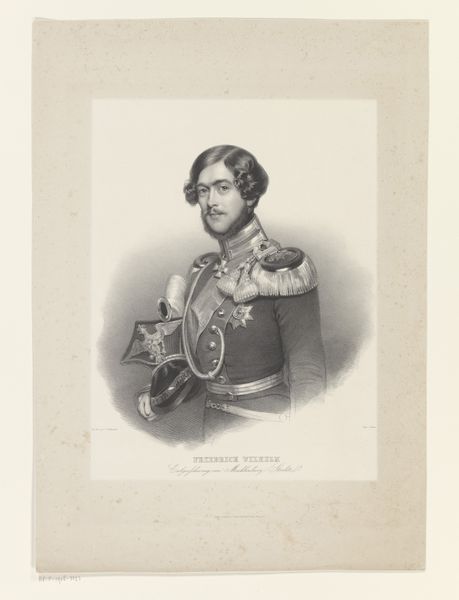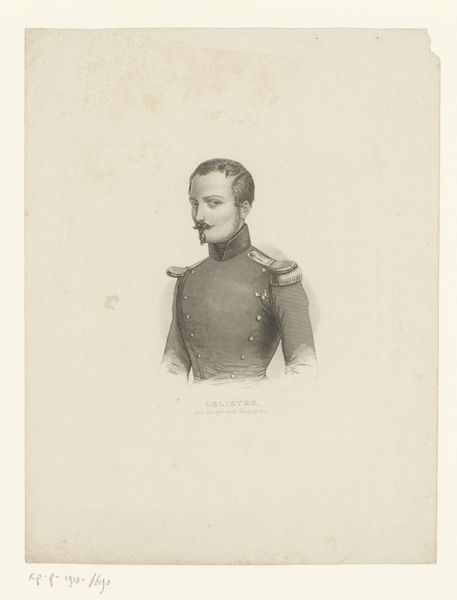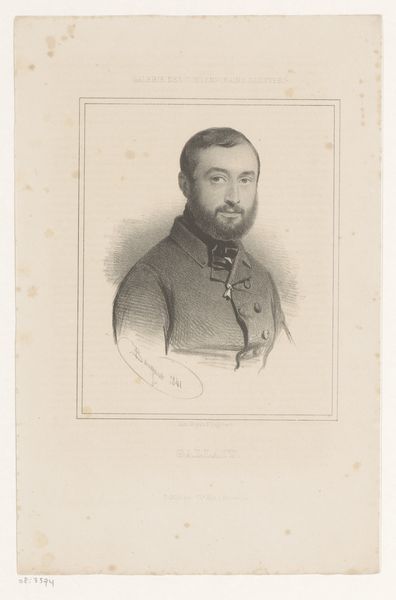
print, pencil, graphite, engraving
#
portrait
#
pencil drawn
#
light pencil work
# print
#
pencil sketch
#
old engraving style
#
pencil drawing
#
pencil
#
orientalism
#
graphite
#
pencil work
#
engraving
Dimensions: height 545 mm, width 378 mm
Copyright: Rijks Museum: Open Domain
Curator: Here we have Marie-Alexandre Alophe's 1853 portrait of Omar Pasha Latas, Ottoman General, rendered with pencil and engraving. Editor: He exudes such stillness, almost a sense of melancholy despite the rigid military bearing. The delicate pencil strokes give it an ephemeral quality, like a memory fading. Curator: It's interesting that you pick up on melancholy. This image exists within a charged historical context of orientalism. Representations of Ottoman figures were often used to reinforce Western perceptions of the "exotic" or "other". How might this influence the General's depiction? Editor: I can see the symbolic framing – the Ottoman figure presented for a European audience. The meticulously rendered details of his uniform, especially the buttons and ornate belt, almost become signifiers of power, meant to be both impressive and slightly foreign. It’s playing into existing visual tropes. Curator: Precisely. And Latas himself had a fascinating life. He was born in Austrian territory and converted to Islam before rising through the Ottoman ranks. Considering this, the portrait might also be interpreted as an assertion of a new identity, a rejection of his European past. What about the Ottoman symbols at the bottom of the engraving? Editor: Those Ottoman characters speak to layered identities, but remain opaque to Western eyes, heightening the mystique. The symbols point towards cultural endurance even as orientalist interpretation obscures complex realities. Curator: It reminds us that even a seemingly straightforward portrait can be a site of cultural negotiation. This wasn’t just about recording a likeness, but about situating a powerful figure within a very specific political and ideological framework. Editor: Looking closely at the lines, there’s an interesting convergence. The sitter appears vulnerable, despite the air of authority. It humanizes Omar Pasha Latas, yet, at the same time, that softness is presented in a space meant to showcase foreign allure, perhaps for a particular sensibility of beauty and style. Curator: This image allows us to ask what is really meant by power and its relationship with the politics of representation in the 19th century. Editor: Indeed. The layers of meaning beneath a subdued surface reveal how representation perpetuates power and even mystery.
Comments
No comments
Be the first to comment and join the conversation on the ultimate creative platform.
